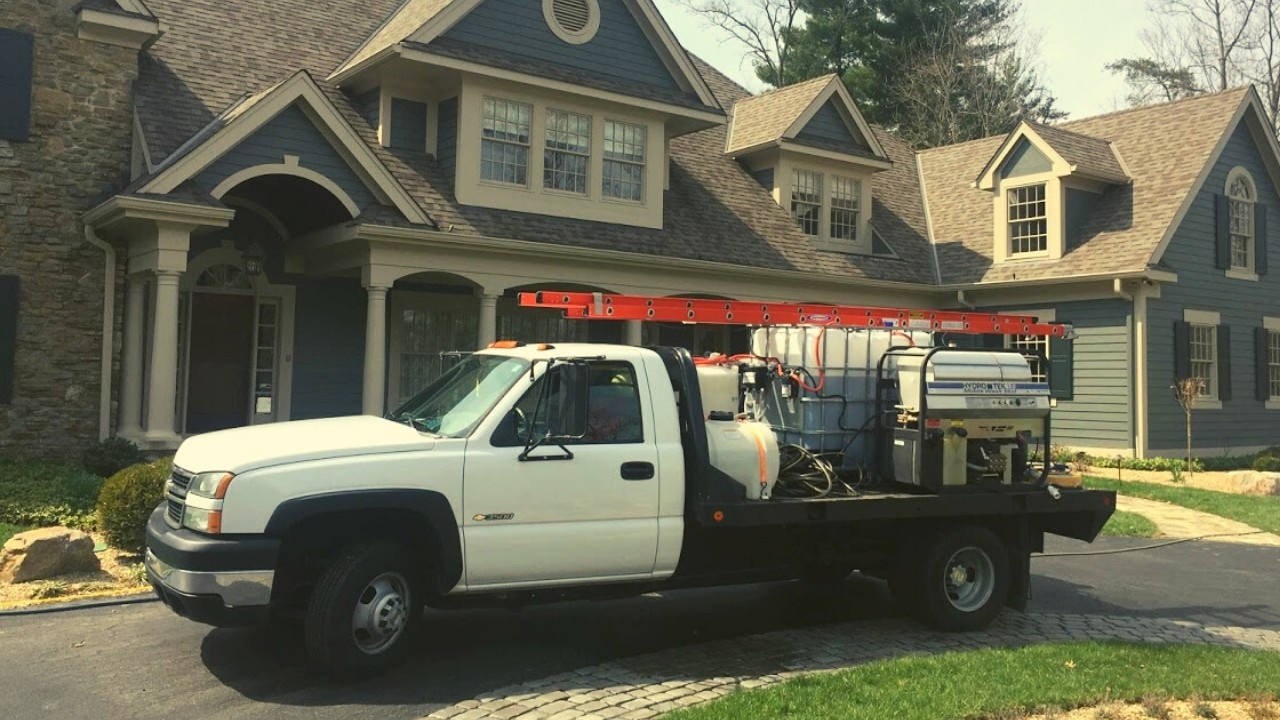
One of the biggest setup decisions you’ll face when starting a power washing business is choosing between a mobile or stationary setup. Do you load your pressure washer into a trailer and hit the road? Or do you keep it in one place and have clients come to you?
Both approaches can work — but the right one for you depends on your goals, budget, location, and market. In this article, we’ll break down the pros and cons of each setup so you can make an informed, profitable choice. 🎯💧
🛻 What Is a Mobile Power Washing Setup?
A mobile setup means you bring your equipment to the customer’s location — their home, business, or property.
This is the most common choice for power washing businesses and typically includes:
- A truck or trailer rig
- A mounted pressure washer system
- Water tank and hose reel
- Storage for chemicals and accessories
- Surface cleaner and safety gear
You show up, unload, clean, pack up, and move to the next job. 🧽🏠
🏠 What Is a Stationary Setup?
A stationary setup means clients come to you. This model is more common in fleet washing, vehicle detailing, or commercial equipment cleaning.
With a stationary setup, you typically operate from:
- A garage, warehouse, or shop
- A fixed water hookup and drainage system
- Permanent electrical and water systems
- Indoor or covered work area for bad weather
Think of it like a power washing “car wash” — the equipment stays in place, and the work comes to you.
✅ Pros of a Mobile Setup
- Maximum Flexibility
You can take your business anywhere — residential driveways, office buildings, apartment complexes, even job sites in rural areas. - More Job Opportunities
You’re not limited by geography. If you can drive there, you can work there. - Low Barrier to Entry
A basic mobile rig can be built on a budget using a pickup truck or small trailer. You don’t need a commercial lease or facility. - Convenience for Clients
Most people prefer a service that comes to them — especially homeowners and busy business owners. - Easier to Market Locally
You can canvas neighborhoods, use yard signs, and advertise “We Come to You!” in local listings.
❌ Cons of a Mobile Setup
- More Moving Parts
You’re constantly loading, unloading, fueling, and maintaining your vehicle and equipment. - Weather Dependent
Rain, snow, or freezing temps can shut down outdoor jobs quickly. - Higher Wear and Tear
Constant travel leads to more maintenance on your truck, trailer, and tools. - Limited Water Supply (Sometimes)
Not all clients offer easy access to water — meaning you may need to invest in tanks and pumps.
Browse Amazon Here For Mobile Pressure Washing Setups And Accessories
✅ Pros of a Stationary Setup
- Controlled Work Environment
With a roof over your head and permanent hookups, weather doesn’t affect your productivity as much. - Streamlined Workflow
Everything is set up and ready — no daily loading, unloading, or transport required. - Specialization Opportunities
You can focus on high-volume services like fleet washing, equipment detailing, or prep work for painting. - Reduced Transportation Costs
No driving to job sites = savings on fuel, time, and vehicle wear.
❌ Cons of a Stationary Setup
- Less Convenient for Clients
You’re asking people (or companies) to come to you, which limits who you can serve. - Need for a Physical Location
This means monthly rent, utilities, insurance, and possibly city zoning approval. - Fewer Residential Opportunities
Homeowners usually don’t want to drive somewhere just to get their house or deck cleaned. You’re likely limited to commercial clients or fleets. - Bigger Upfront Investment
Setting up a fully compliant wash bay or indoor cleaning facility can easily cost $10,000–$50,000+ depending on size and location.
💸 Cost Comparison
| Setup Type | Startup Costs | Ongoing Costs | Revenue Potential |
|---|---|---|---|
| Mobile | $2,000 – $10,000 | Fuel, maintenance, wear/tear | Moderate to high (wider reach) |
| Stationary | $15,000 – $50,000+ | Rent, utilities, zoning, water | High (with the right niche) |
👉 Most new power washers choose mobile setups due to lower startup costs and more flexibility.
👷 Which Setup Is Best for Beginners?
For most new business owners, a mobile setup is the way to go. Here’s why:
- You can get started with less cash
- You’ll have access to more job types (residential, light commercial, etc.)
- You can test the market without locking into a lease or permanent location
- You can scale gradually by adding a second rig or employee
Start mobile, build a reputation, and grow. Later, if you see an opportunity (like a local fleet washing contract), you can consider opening a stationary location.
🧠 Tips for a Great Mobile Setup
- Secure your gear with tie-downs and locks
- Use a hose reel to save time and avoid tangles
- Carry extra nozzles and tools — breakdowns on-site are costly
- Invest in signage for your vehicle or trailer to advertise while you drive
- Consider a buffer tank if water access is inconsistent at job sites
Small efficiencies add up fast — and looking professional builds client trust. 👍
🚀 Final Thoughts
Both mobile and stationary setups can be profitable, but if you’re just getting started, mobility gives you freedom, reach, and room to grow.
Think of your truck or trailer as your mobile storefront. Every job is a chance to get seen, earn reviews, and book the next one. When your calendar is full and your brand is strong, then — and only then — consider if a stationary location fits into your business plan.
Until then? Keep it mobile, stay nimble, and go clean up the town. 💪🧼🚛
Browse Amazon Here For Mobile Pressure Washing Setups And Accessories






